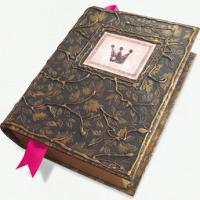Finding the Truth in Testing through Folk Tales and Fairy Stories

When I was a child, I spent much of my time reading, writing, and illustrating stories and poems. I lived in my imagination. But life intervened with a reality of science and computing, and so I have spent more than thirty years working in the IT industry, mostly in software testing and software quality. Now, looking back on those years, it seems to me that the ability to imagine, read, and listen to stories about analytic and human matters has been the mainstay of my career.
One of the things we do when we test is build fictions in our minds. We make thought experiments about what the product or system we are testing might do, what we could expect the results of an action to be, what they should be, and how they might go wrong. Then, in the act of actually executing tests, we try and reproduce those thought experiments and observe what happens.
For testing, we use models. But we know models are never complete; they are simply a useful analogy—or fiction—about the system that helps us understand it. For example, state diagrams or control flow diagrams describe one aspect of a system. These models are based on analytic methods, so we believe them to be the truth, but in fact they are a useful subset of the truth that allows us to grasp an idea and work with it.
We also need to understand complex situations and interactions in the human side of IT. For me, this is where folk tales and fairy stories are most important. These types of stories help me understand what is happening in an organization: That manager is an ogre; the developer grants my wishes; I need to find the magic word that opens the door to the support department.
Your choice of genre for the stories you tell may be different; for example, I once heard a project manager talking about Dirty Harry as his model for being a PM. I then thought carefully about whether we’d work well together … But the point is, you can use stories to model and make sense of your world.
And it doesn’t work just for your own benefit. Most people respond and relate to stories well, so you can also use these analogies when communicating with your team, management, and the business side. Once you start thinking in terms of folk tales and fairy stories, you might be surprised at how they can help you express ideas about testing and quality.
Isabel Evans is presenting the keynote Telling Our Testing Stories at the 2016 conference.

